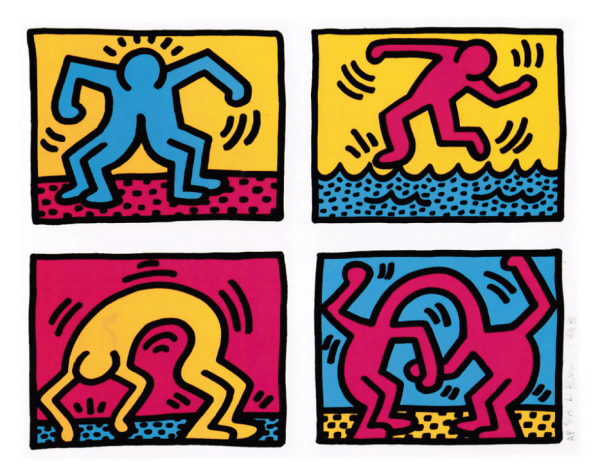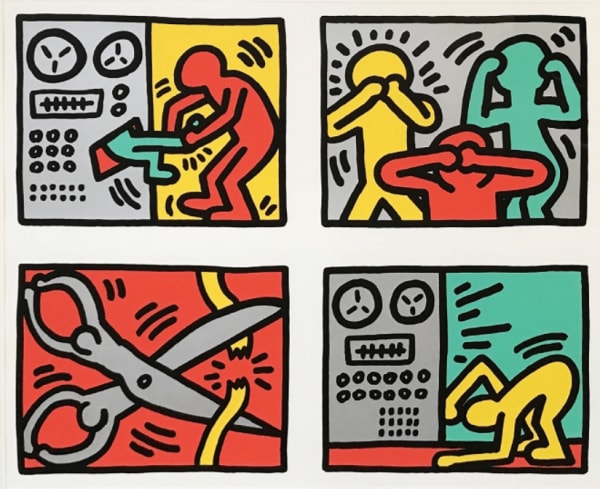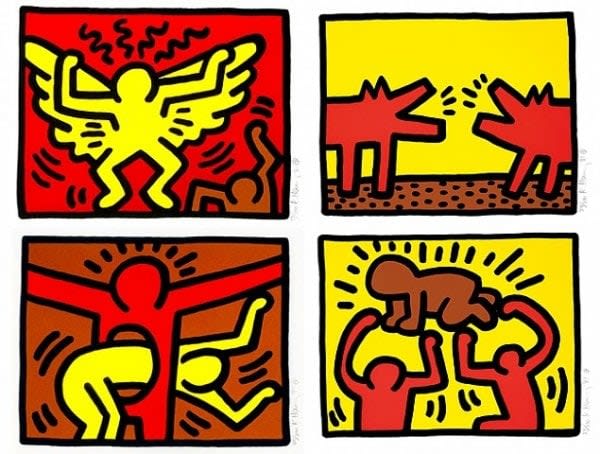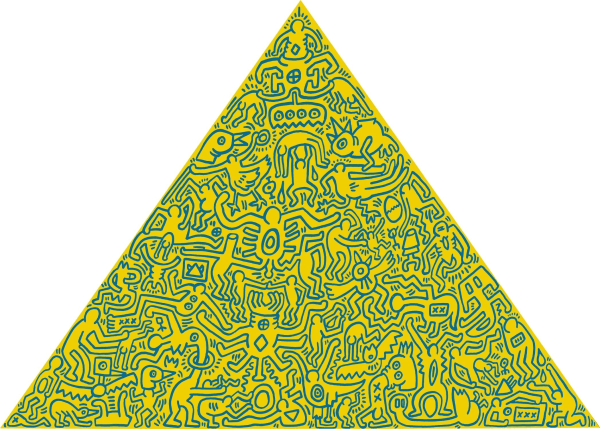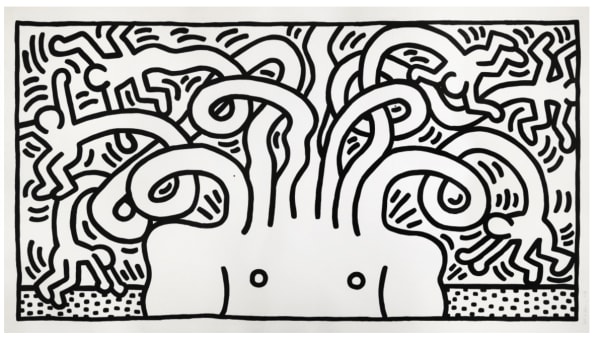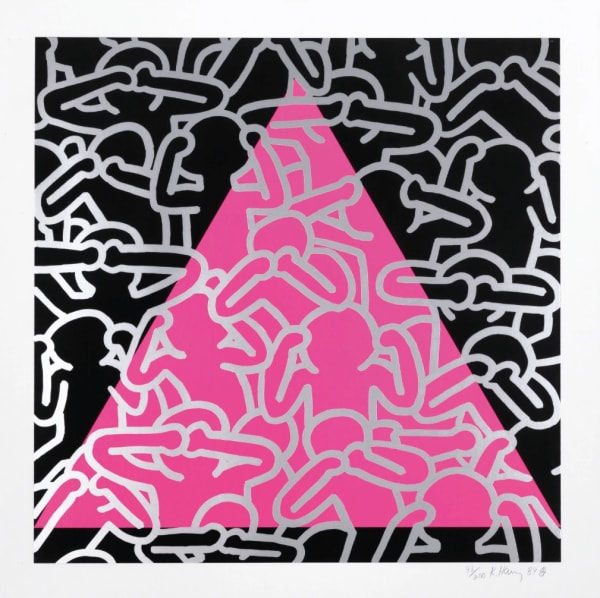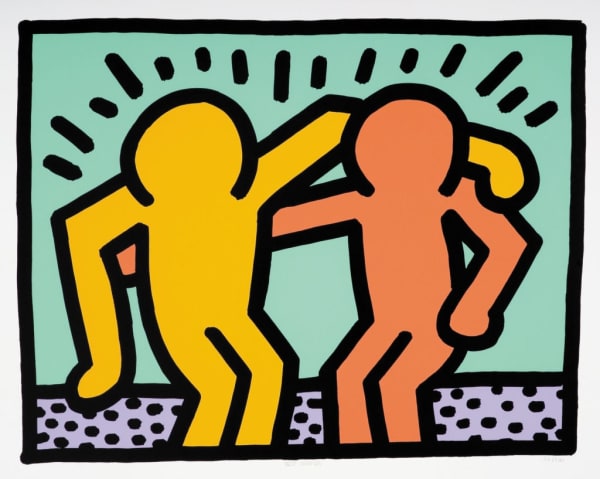Keith Haring remains one of the most iconic artists of the late twentieth century. His bold lines, vivid colors, and instantly recognizable symbols brought a new energy to contemporary art. Emerging from the street culture of New York City in the early 1980s, Haring managed to bridge the worlds of graffiti, fine art, and commercial culture in a way few others had achieved. His imagery—radiant babies, barking dogs, flying saucers, and dancing figures—was filled with energy, humor, and political commentary. Yet, beneath the playful immediacy of his work lay a deep engagement with social issues such as consumerism, racism, nuclear threat, and, most importantly, the HIV/AIDS epidemic.
Tragically, Haring’s life and career were cut short when he died in February 1990 at the age of just thirty-one. His death not only shocked the art world but also became a pivotal moment in raising awareness about AIDS and the vulnerability of an entire generation of artists. To understand the impact of his passing, it is important to look at the circumstances of his death, how it was reported, and the cultural reverberations it created.
Haring’s Diagnosis and Final Years
In 1988, Keith Haring was diagnosed with AIDS. At that time, the epidemic was at its height, and the stigma surrounding the disease was profound. Medical treatments were limited, and a diagnosis often carried the weight of a death sentence. Haring, who had always embraced openness in both his life and art, refused to conceal his illness. Instead, he publicly acknowledged his diagnosis and began to incorporate the reality of AIDS into his artwork with even greater urgency.
In interviews, Haring spoke candidly about living with the virus, his fears, and his determination to use the time he had left to make a difference. Works such as Unfinished Painting (1989) symbolized the incompleteness of a life cut short, while Silence = Death and his “Ignorance = Fear” images directly confronted the politics and prejudice surrounding the epidemic. For Haring, art became both a vehicle for personal expression and a tool for activism.

The Circumstances of His Death
Keith Haring died on February 16, 1990, in New York City from AIDS-related complications. He was just thirty-one years old. His death was not unexpected—friends, colleagues, and admirers knew of his diagnosis—but the finality of it was devastating. Here was a young artist at the height of his powers, internationally recognized, and deeply embedded in the cultural fabric of the city. The abrupt loss underscored the brutality of AIDS, which had already claimed countless lives in the artistic and LGBTQ+ communities.
Media Reporting of Haring’s Death
The reporting of Haring’s death reflected both the cultural impact he had made and the broader climate of the late 1980s and early 1990s. Major newspapers such as The New York Times covered his passing, noting both his artistic achievements and his activism. The Times obituary highlighted his contributions to public art, his collaborations with artists and musicians like Madonna and Jean-Michel Basquiat, and his efforts to bring art into the lives of everyday people through murals, subway drawings, and his Pop Shop.
What was striking about the coverage was how openly his cause of death—AIDS-related complications—was acknowledged. At a time when many families of AIDS victims concealed or softened the truth, Haring’s openness forced mainstream media to confront the crisis directly. His death was not just an individual tragedy but also a symbol of the epidemic’s reach into the heart of cultural life.
International reporting followed suit, with outlets in Europe, Asia, and South America paying tribute to Haring as a global figure. The fact that his work had already been shown worldwide helped ensure that his death resonated far beyond New York. For many, the loss of Haring served as a reminder that the art world was bleeding talent due to the disease.
Immediate Reactions and the Art World’s Grief
The response to Haring’s death was immediate and heartfelt. Artists, curators, and activists mourned his passing not only as the loss of an individual but also as the loss of a voice that had tirelessly advocated for visibility, compassion, and justice. Fellow artists such as Andy Warhol had died just a few years earlier, and Jean-Michel Basquiat had succumbed to a heroin overdose in 1988. Haring’s death, then, felt like another painful chapter in a narrative of youthful brilliance cut short.
Tributes poured in from around the world. Galleries held memorial exhibitions, and his works became even more closely associated with the fight against AIDS. Public murals and installations created in his memory helped to cement his legacy as a socially engaged artist who had never abandoned the communities from which he emerged.
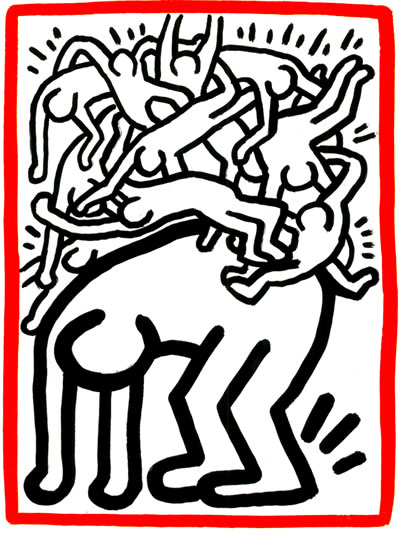
The Role of the Keith Haring Foundation
Before his death, Haring took steps to ensure that his legacy would continue to support the causes he cared about most. In 1989, he established the Keith Haring Foundation. The foundation’s mission was twofold: to maintain and circulate his art and to support organizations involved in education, children’s welfare, and AIDS research and activism.
The creation of the Foundation was a critical move. It meant that Haring’s work would not only be preserved but also actively used to generate funding and awareness for social causes. After his death, the Foundation became central in shaping the narrative of Haring as both an artist and an activist. It also guaranteed that his art, which had always been accessible and public, would remain a tool for education and engagement.
The Cultural Impact of His Death
The cultural impact of Haring’s death can be considered in several layers:
-
Awareness of AIDS: Haring’s openness about his illness made him one of the most visible public figures to die from AIDS-related complications at that time. His death humanized the crisis for audiences who may have dismissed it as distant or irrelevant.
-
Art as Activism: Haring demonstrated how art could be weaponized against prejudice and ignorance. His death reinforced the importance of creative voices in social justice movements, inspiring other artists to follow his lead.
-
Youth and Mortality: The fact that Haring was only thirty-one amplified the tragedy. He symbolized a generation of artists, many of whom never lived to see their full potential realized.
-
Market and Legacy: The art market also reacted to his death, with demand for his works increasing as collectors recognized the finite nature of his output. Yet, unlike some artists whose reputations grew primarily after death, Haring was already celebrated during his lifetime. His passing, therefore, did not create his fame but rather deepened its poignancy
-
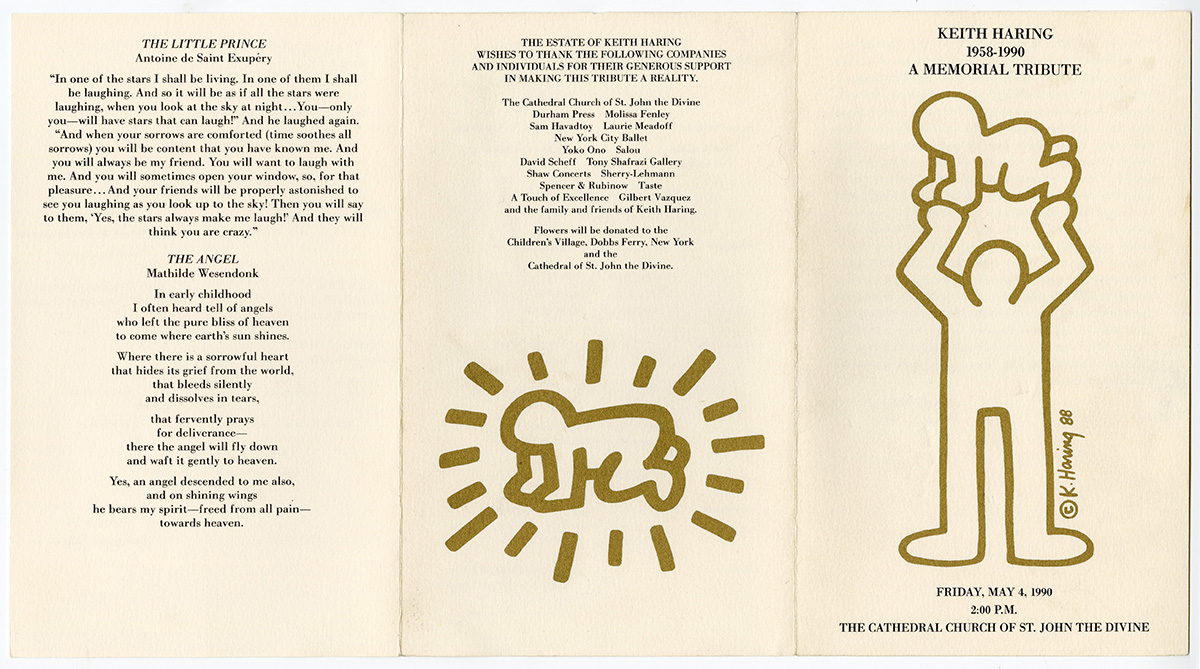
How His Death Was Remembered in Later Years
Over three decades after his passing, Keith Haring’s death continues to be remembered as a pivotal moment in both art history and the history of the AIDS epidemic. Retrospective exhibitions often highlight the urgency of his final works, underscoring how his creativity persisted even as his health declined. Educational programs frequently use Haring’s life and death to discuss the intersection of art, politics, and illness.
Anniversaries of his death are marked not only by art institutions but also by activists who continue to see Haring as a model of openness and advocacy. His story is often taught alongside those of other cultural figures lost to AIDS, such as Freddie Mercury, Robert Mapplethorpe, and David Wojnarowicz, creating a larger narrative about how the epidemic reshaped cultural production in the late twentieth century.
Keith Haring’s death in 1990 was more than the passing of a gifted artist—it was a moment that crystallized the devastating impact of AIDS on the artistic community and broader society. The reporting of his death, frank and unflinching, helped to destigmatize public conversations about the epidemic. The immediate outpouring of grief demonstrated how deeply he had touched people across the globe, while the establishment of the Keith Haring Foundation ensured that his commitment to art, children, and activism would endure.
Today, his legacy lives on not only in museums and galleries but also in classrooms, on city walls, and in the ongoing fight for social justice. His death was a tragedy, but his life’s work—and the way he faced his final years with courage—transformed that tragedy into a catalyst for awareness, compassion, and change.
Discover Keith Haring prints for sale and contact our galleries via info@guyhepner.com for latest availabilities.


